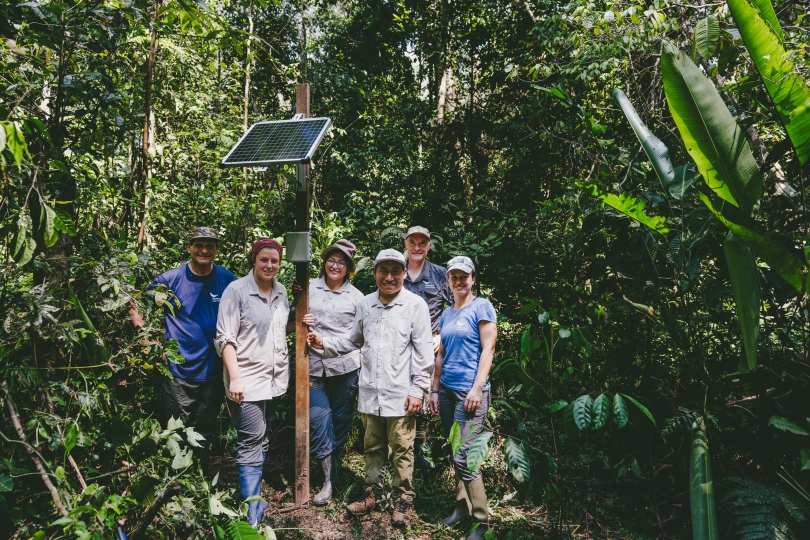Wilderness International: Collecting scientific data and detecting illegal fires in the Peruvian Amazon rainforest
Customer:
Wilderness International
Sector:
NGO
Project duration:
2 years
Project type:
Air quality monitoring & wildfire detection
Challenge:
Detect illegal fires and collect scientific data
Solution:
Implemented combined air quality and wildfire sensor network in Wilderness International’s protected area
“The automatic digital monitoring of ambient emissions in our protected areas makes our wilderness protection work much easier, because Peru’s dense forests are sometimes difficult to reach and monitor. The smart technology enables our local Forest Guardians to act quickly when detecting man-made fires, and enables them to monitor the general air quality as well. Breeze Technologies thus supports us in reconciling research, forest and biodiversity protection and in using our resources even more effectively. The design also allows us to easily adapt the sensors to the site conditions and travel circumstances. We are enthusiastic about the one-year pilot project and hope to continue to work together to preserve wilderness in the long term beyond the first year.” – Marie Schreiber, Scientific Communication Manager at Wilderness International
PROJECT CONTEXT
Wilderness International purchases ecologically valuable and acutely threatened wilderness areas around the world to preserve them for all future.
One of the areas protected by WI is the “Secret Forest”, an Amazon rainforest in Peru’s Tambopata region. This diverse habitat’s trees, riverbanks, oxbow lakes, palm swamps and other bodies of water provide a home for a huge variety of animals and plants, for instance jaguars, macaws and capybaras. Each square meter of rainforest binds 60 kilograms of CO2.
PROJECT GOALS
The project aims at:
- Collecting scientific data from the Peruvian rainforest and enriching Wilderness International’s online map with real-time information about local climate and air quality to provide all involved parties with additional information about the biosphere they are protecting
- Detecting fires from illegal activities in real-time, e.g. campfires from poachers, to enable the Forest Guardians to swiftly react. While there is no imminent threat of a forest fire in a rainforest, the technology is crucial in detecting both fires for conversion into farmland outside the areas protected by WI, as well as small fires by poachers.
PROJECT RESULTS
A network of four air quality and wildfire sensors has been deployed. The collection of scientific data is ongoing.
PUBLICATIONS
More about the project on the website of Wilderness International (WI, 12.07.23)


